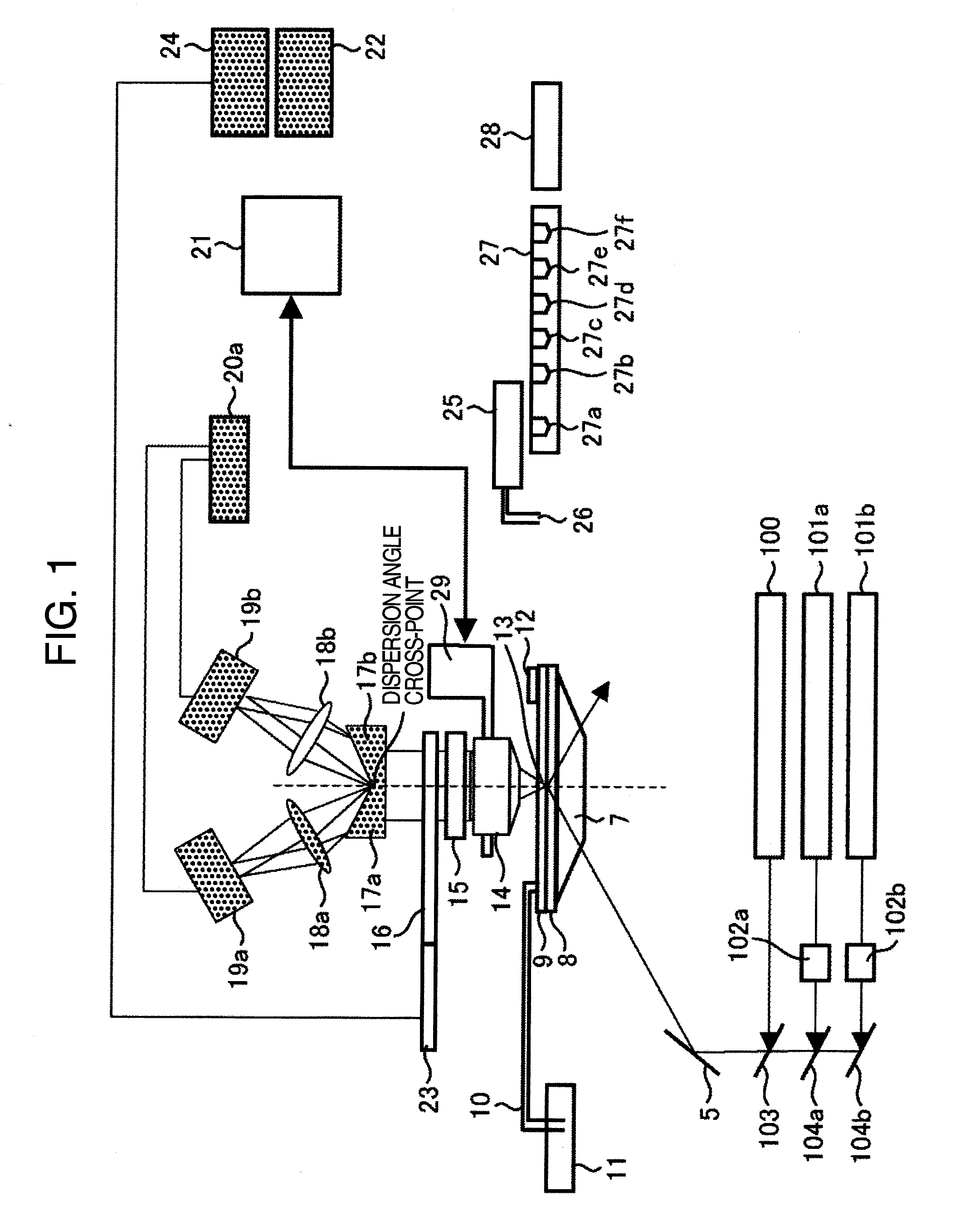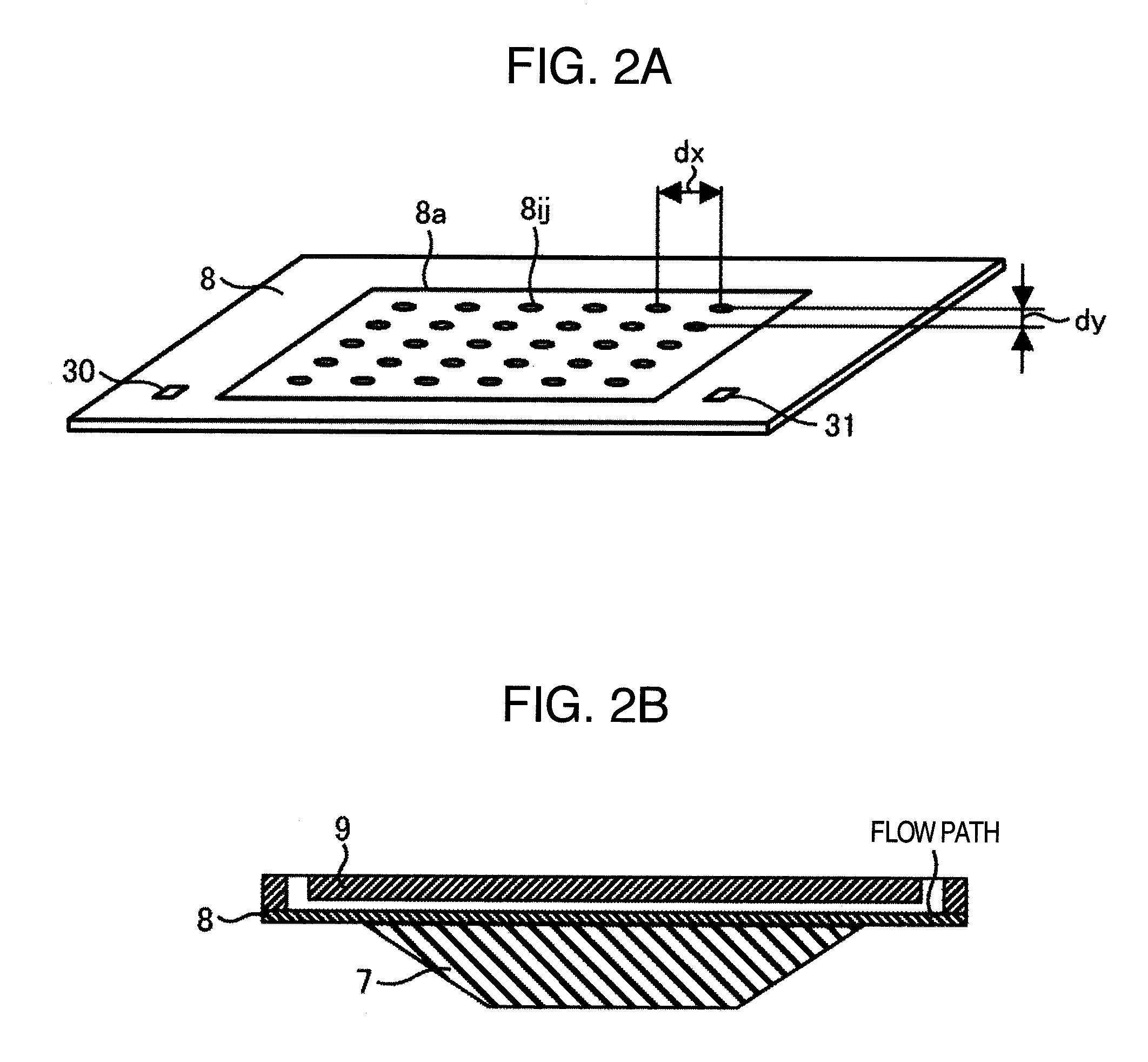Fluorescent analysis method
a fluorescent analysis and fluorescence technology, applied in the field of fluorescence analysis apparatus, can solve the problems of unnecessary purification and amplification, expensive cameras become necessary, etc., and achieve the effects of improving detection efficiency, high throughput, and reducing the number of errors
- Summary
- Abstract
- Description
- Claims
- Application Information
AI Technical Summary
Benefits of technology
Problems solved by technology
Method used
Image
Examples
embodiments
[0064]While this invention is set forth below based on embodiments, the invention is not limited thereto.
first embodiment
[0065]An explanation is given of an apparatus and a method for capturing DNA fragments of a to-be-analyzed sample onto a substrate surface one molecule at a time at equal intervals, elongating in an almost one-by-one manner at a time, and for detecting incorporated fluorescent labels on a per-molecule basis, thereby determining a base sequence. More specifically, while letting one cycle consist of a process of performing DNA polymerase reaction using four kinds of dNTP derivatives, which are incorporated into a template DNA as substrates of DNA polymerase and able to stop DNA strand elongation reaction due to the presence of a protecting group and which also have detectable labels, a sequential process of detecting such incorporated dNTP derivatives by fluorescence or the like, and a process of restoring the dNTP derivatives to an state able to elongate, the cycle of these processes is repeated to thereby determine the base sequence of the sample DNA. Incidentally, since this operat...
second embodiment
[0104]FIG. 4 is a configuration diagram of a DNA test apparatus using the fluorescence analysis method of this invention. While FIG. 1 is the microscope using prism total-internal-reflection scheme, FIG. 4 is a microscope with the laser incident direction and the fluorescence detection direction being the same direction. As this type of apparatus, there is also a microscope of objective-lens total-internal-reflection scheme capable of performing single-molecule detection by irradiating a laser from the peripheral part of an objective lens at an angle ensuring the occurrence of total internal reflection, which is also employable in embodiments below. The apparatus has a configuration similar to that of a microscope and is arranged to measure by fluorescence detection the elongated states of DNA molecules to be captured onto a substrate 8. The substrate 8 has a structure shown in FIG. 2. The substrate 8 is at least partly made of a transparent material and material such as synthetic q...
PUM
| Property | Measurement | Unit |
|---|---|---|
| diameter | aaaaa | aaaaa |
| diameter | aaaaa | aaaaa |
| size | aaaaa | aaaaa |
Abstract
Description
Claims
Application Information
 Login to View More
Login to View More - R&D
- Intellectual Property
- Life Sciences
- Materials
- Tech Scout
- Unparalleled Data Quality
- Higher Quality Content
- 60% Fewer Hallucinations
Browse by: Latest US Patents, China's latest patents, Technical Efficacy Thesaurus, Application Domain, Technology Topic, Popular Technical Reports.
© 2025 PatSnap. All rights reserved.Legal|Privacy policy|Modern Slavery Act Transparency Statement|Sitemap|About US| Contact US: help@patsnap.com



